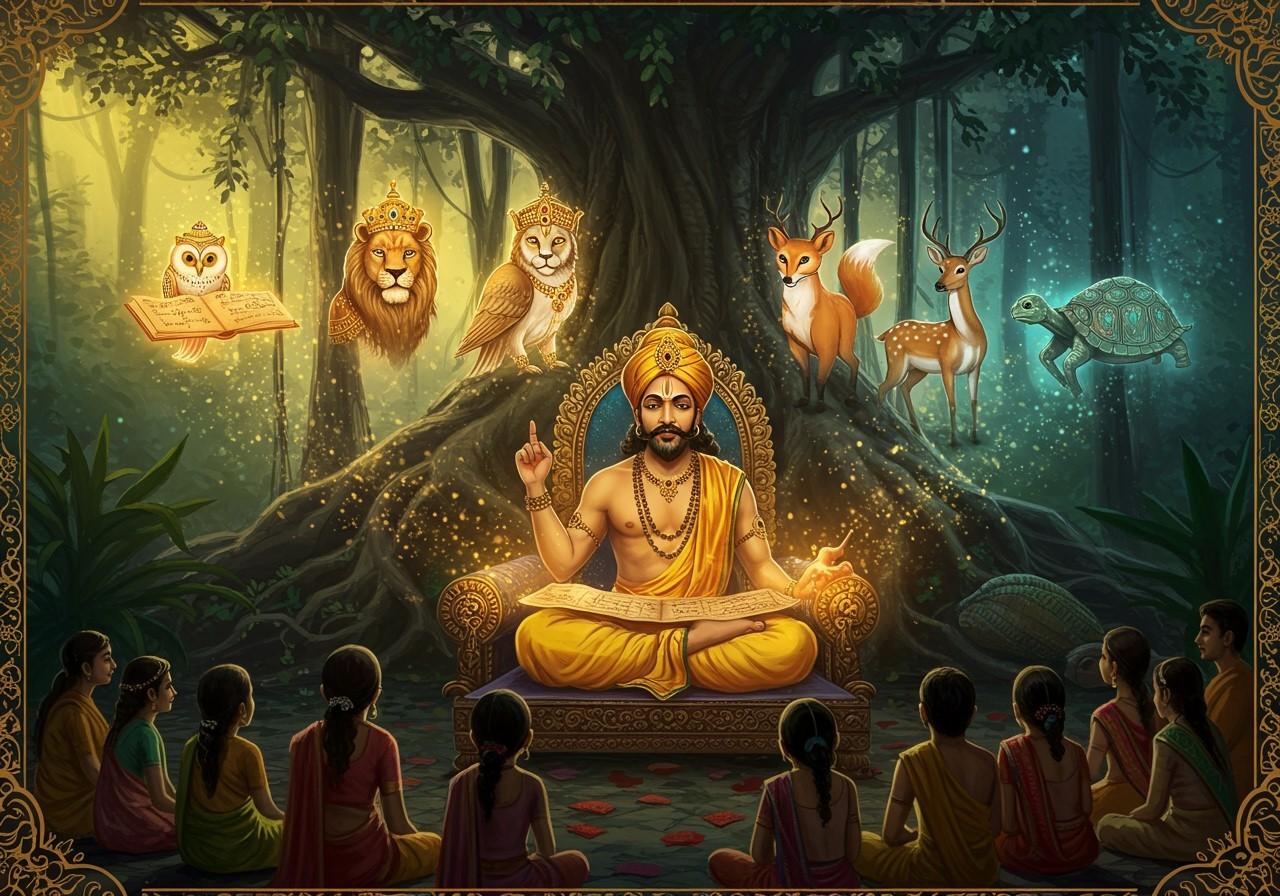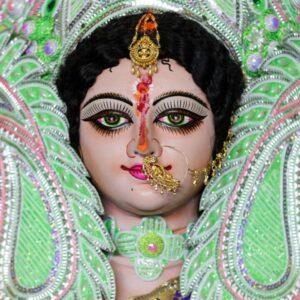
The Panchatantra, an ancient collection of Indian fables and moral stories, holds a special place in the hearts of those connected to Indian culture. Originally written in Sanskrit by Vishnu Sharma, these timeless tales, featuring animals with human-like qualities, have been passed down for generations, imparting wisdom and ethical guidance. Each story concludes with a moral lesson, making them valuable for teaching children about friendship, diplomacy, wit, and morality. Despite their age, Panchatantra stories remain relevant today, offering insights that resonate with audiences of all ages.
What are Panchatantra Tales?
The Panchatantra, as described in resources like https://www.poojn.in/post/14938/hindu-philosophy-explained-a-beginners-guide-2, is more than just a collection of stories; it’s a guide to navigating life’s complexities. Written by Vishnu Sharma, these fables were designed to educate young princes in the art of governance, diplomacy, and essential life skills. Structured into five books, each focusing on a different aspect of life—friendship, conflict, wisdom, and more—the Panchatantra offers a comprehensive exploration of human interaction and societal dynamics.
The stories often feature animal characters embodying human traits, making complex lessons more relatable and engaging. Each tale concludes with a moral, providing a clear takeaway applicable to real-life situations. The Panchatantra’s influence extends across cultures worldwide, with many stories adapted into various languages and formats, demonstrating its enduring appeal.
Panchatantra Stories for Adults
While often perceived as children’s literature, the Panchatantra’s themes and morals hold deep relevance for adults. Stories like “The Monkey and the Crocodile” explore trust and betrayal, while “The Lion and the Rabbit” emphasizes the power of intelligence over brute force. These narratives offer valuable insights into human behavior, relationships, and societal norms, prompting reflection on one’s own actions and choices.
Adults can appreciate the allegorical depth and nuanced lessons applicable to modern life, including strategic thinking, leadership, and conflict resolution. Revisiting these stories can be a nostalgic journey, reconnecting adults with their cultural heritage and cherished childhood memories. Find more about the influence of Indian culture at https://www.poojn.in/post/14843/ramayanas-enduring-influence-on-indian-culture-2.
Stories Like Panchatantra
The Panchatantra’s essence has inspired numerous collections of moral tales and fables. The Jataka Tales, rooted in Buddhist traditions, share similar themes of virtue and wisdom. Aesop’s Fables, from ancient Greece, also mirror the moralistic storytelling found in the Panchatantra, using animals and concise narratives to impart ethical lessons. These cross-cultural connections highlight the universal desire to convey life lessons through engaging storytelling.
The Hitopadesha, another Indian collection, draws direct influence from the Panchatantra, continuing the tradition of imparting wisdom through captivating narratives. Comparing these collections provides a broader understanding of how diverse cultures utilize storytelling to teach morals and values. For those interested in exploring the characters and life lessons from the Ramayana, a related epic, https://www.poojn.in/post/14840/ramayana-characters-and-life-lessons-2 provides a deeper dive into these timeless narratives.
Cultural Significance
The Panchatantra reflects ancient Indian philosophical thought and worldview. It encapsulates the values of dharma (righteousness), artha (prosperity), kama (desires), and moksha (liberation). These concepts, central to Hindu philosophy, are woven into the narratives, offering guidance on ethical living and the pursuit of a meaningful life. The tales emphasize the importance of wisdom, strategy, and ethical conduct in both personal and professional spheres.
The Panchatantra’s continued popularity in modern India underscores its enduring relevance in transmitting traditional values. The stories serve as a powerful medium for cultural heritage transmission, securing their place as an integral part of Indian literature and education. To understand the concept of Dharma in the Ramayana, visit https://www.poojn.in/post/14846/dharma-in-the-ramayana-a-thematic-exploration-2.
Educational Value
Panchatantra tales are valuable educational tools, teaching children moral values, critical thinking, and problem-solving skills. The engaging narratives make complex concepts and ethical dilemmas accessible to young minds. Educators use these stories to introduce topics like empathy, cooperation, and justice in an entertaining and instructive manner. They provide a framework for understanding the consequences of actions and the importance of making thoughtful choices.
For adults, the Panchatantra offers insights into interpersonal dynamics and emotional intelligence development. The timeless wisdom embedded in these stories makes them a valuable resource for personal growth and navigating the complexities of human relationships. The stories provide a lens through which to examine one’s own behavior and motivations, fostering self-awareness and promoting ethical decision-making.
Shop Panchatantra Books and Learning Materials at Poojn.in
Poojn.in, India’s leading cultural goods and services store, offers a wide selection of authentic Panchatantra learning materials. Our collection helps you share these timeless stories with the next generation. We provide resources that cater to various learning styles and age groups, ensuring an engaging and enriching experience for all.
- Illustrated Panchatantra storybooks: Available in multiple Indian languages, these beautifully illustrated books bring the stories to life, capturing children’s imaginations and making learning enjoyable. We offer a diverse range of editions, catering to different age groups and reading levels.
- Audiobooks: Immerse yourself in the world of Panchatantra with our collection of audiobooks, narrated by skilled storytellers. These are perfect for car rides, bedtime stories, or anytime listening, making learning accessible and convenient.
- Educational flashcards: Featuring Panchatantra characters and morals, these flashcards are a fun and interactive way to learn key values and reinforce the stories’ messages. They’re a great tool for both individual and group learning.
- Activity books: These interactive books reinforce values through puzzles and games, making learning a playful experience. Children can engage with the stories in a hands-on way, deepening their understanding of the morals and lessons.
- Traditional wooden storytelling aids and props: Enhance storytelling sessions with our traditional wooden aids and props. These add a tactile and visual dimension to the stories, creating a more immersive and memorable learning experience.
All products are carefully selected to preserve the authenticity of these ancient fables while making them engaging for modern audiences. Our collection empowers parents, grandparents, and educators to share these valuable moral lessons in an interactive and meaningful way. We are committed to providing high-quality resources that honor the rich tradition of the Panchatantra.
Visit www.poojn.in to explore our full range of Panchatantra educational materials. We offer secure online ordering and delivery across India. Our dedicated customer service team is available to assist you in selecting age-appropriate items. We strive to provide a seamless and satisfying shopping experience, ensuring you find the perfect resources to share the wisdom of the Panchatantra.
As India’s largest Dashakarma bhandar, we ensure all products meet high-quality standards and stay true to traditional values. Shop with confidence, knowing you’re getting genuine items to help preserve and transmit our rich cultural heritage. We are dedicated to providing authentic and ethically sourced products that support the preservation of Indian traditions.
Note: Product availability and prices may vary. Please check the website for the current selection.
Conclusion
The Panchatantra tales are timeless treasures that transcend age and generation. They offer profound lessons in wisdom, ethics, and human nature. Whether a child learning about friendship and honesty or an adult navigating life’s complexities, the Panchatantra provides valuable guidance and insight. These stories serve as a compass, helping us navigate the challenges and opportunities that life presents.
In today’s fast-paced world, these ancient fables remind us of the enduring values that connect us. They bridge the gap between generations, linking us to our cultural roots while offering practical wisdom relevant in modern times. Embracing these stories can enrich our lives, fostering personal growth and a deeper understanding of ourselves and the world around us.
Reading the Panchatantra is not just an act of learning; it’s a celebration of our heritage, a tribute to the wisdom of our ancestors, and a guiding light towards a more thoughtful and ethical life. Let us cherish these stories and continue to share them, ensuring their timeless morals and values endure for generations to come. By keeping these narratives alive, we contribute to a richer, more compassionate, and ethically grounded future.

